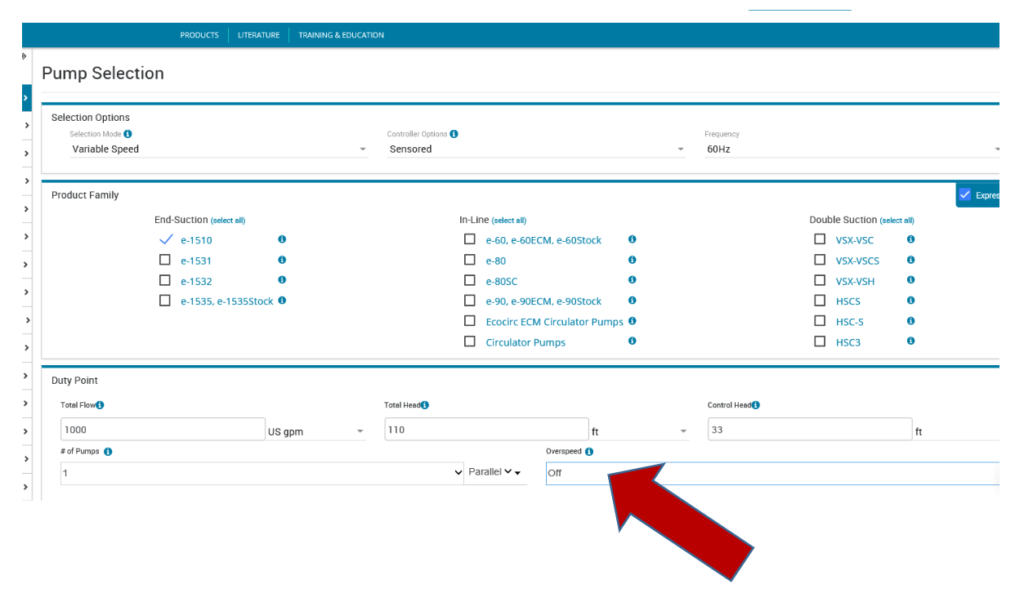 I hope everyone had a wonderful Thanksgiving celebration. Here at Deppmann, we are thankful for the great industry we serve and the great people who work in that industry.
I hope everyone had a wonderful Thanksgiving celebration. Here at Deppmann, we are thankful for the great industry we serve and the great people who work in that industry.
The term “over-speeding” in pump selection and operation is becoming a topic of conversation in the world of hydronic design. When asked about this subject I often talk about driving your vehicle. Many people feel comfortable going above the speed limit but want to know that magic number where you are likely to earn a ticket. Over-speeding your pump is acceptable but there are limits. Want to avoid being pulled over?
What is Over-Speeding a Pump?
Most traditional pump curves have a published speed. In the last R. L. Deppmann Monday Morning Minute, I showed a video on how to view the constant speed “Oaktree” curves in the Bell & Gossett ESP-Systemwize program. Those curves have a speed with multiple impellers. We know we can reduce the speed and the capacity using a variable frequency drive (VFD). Most VFDs will allow you to over-speed a motor as long as the drive has enough KW capability. Over-speeding is simply operating a motor at an RPM greater than the nameplate RPM of the motor.
Four Reasons to Consider Over-Speeding a Pump
There are four key reasons to operate a pump at an RPM greater than the nameplate motor RPM.
- I missed the head calculation and I need a little more at the design flow rate.
- I have a selection which ends up near the lowest impeller size which also means lower efficiency.
- My selection of a larger pump with the lower sized impeller costs more than others.
- I have an existing system which I am adding to and need to add a little more capacity from the existing pumps.
Rules of the Road When Over-Speeding a B&G Pump
There are always exceptions to rules, but just like the introductory comment about breaking the speed limit, it is wise to not stray too far from the published speed. Bell & Gossett has a couple of simple rules to follow. There is more information in a previous article on this same subject: How To Pick a Centrifugal Pump: Part 9. If you want to stray from these rules, contact your local B&G representative.
- As good as you are, you cannot create energy. A given gallon per minute (GPM) flow rate at a given head will require the right horsepower motor and VFD. If the non-overloading HP at 1000 GPM at 110 feet and 1750 RPM is 40 HP, it will require 40 HP at 1800 RPM, 1850 RPM, or 1550 RPM.
- The maximum over-speeding without having B&G engineering look at the request is 120% of the published pump motor nameplate speed.
How Do I Select a B&G Pump for Over-Speeding?
Bell & Gossett made it simple for you to view and analyze the over-speeding selections without hiding it from you. Let’s look at an example and a couple of screenshots. Let’s assume we have a client who is interested in both efficiency and longevity in their pumps. You choose the B&G e1510 for its long life and want to select a higher efficiency model. We start with a variable speed selection of 1000 GPM at 110 feet with over-speed off.
We then look at the same selection with over-speed “on”. Let’s see what happens.
We can see some real advantages when we use over-speeding selections in this example. Not every pump selection will offer great advantages when in over-speed mode but it is a tool you should know how to use.
Two Quick Notes Before Closing
If you are concerned about selecting the maximum impeller on a pump curve to give you some wiggle room and safety factor, it’s time to rethink your decision after reading this article.
If you want to see how easy it is to adjust the drive in the field with your B&G pump and a Danfoss or B&G drive, watch a video from our MMM called Adjusting a Variable Frequency Drive (VFD) to Over Speed an HVAC Centrifugal Pump.
Next week we start the expansion tank sizing R. L. Deppmann Monday Morning Minutes series with a voluntary quiz.


